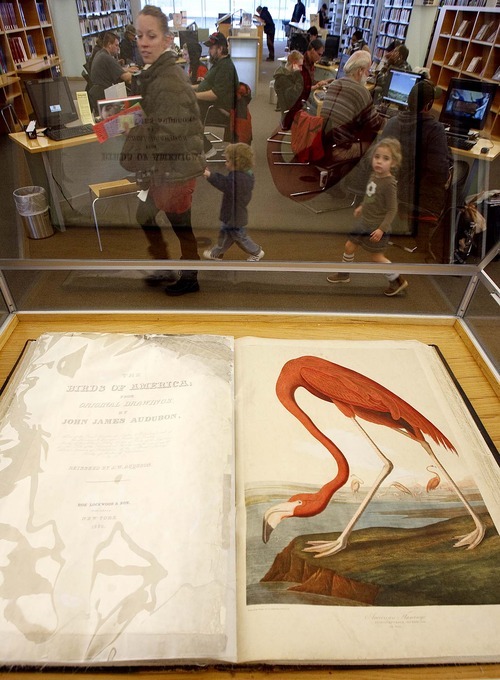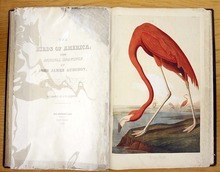This is an archived article that was published on sltrib.com in 2010, and information in the article may be outdated. It is provided only for personal research purposes and may not be reprinted.
When a copy of 19th-century naturalist John James Audubon's lushly illustrated four-volume Birds of America sold for $11.5 million in London last week, Utahns who care about nature and books took notice.
Art-, book- and nature-loving residents have been poring over a similar Audubon folio at the Salt Lake Library for more than a century. Utah's Birds of America is protected in a glass case on the fourth floor of the downtown Salt Lake Main Library, where its pages are periodically turned to allow the public to ogle the illustrations.
Every time an Audubon Birds of America sells at an auction — one sold for $8.8 million in 2000 — the library receives calls about its copy, says Cheri (pronounced "cherry") Willis, the local librarian who watches over the massive book. "It's not quite the same," she explains of Salt Lake City's copy.
The library's edition of Birds of America was a later run commissioned by Audubon's son, John, in the late 1850s. Instead of being hand-colored like the original 1826-1838 illustrations, the library's version, on similar 27x40-inch double-elephant sheets, was printed in 1860 by Julius Bien. It used a then-revolutionary chromolithography method that involved engraving multiple stone plates to reproduce the color illustrations.
Before the project was completed, the Civil War intervened, and it's unclear how many of the 150-illustration copies were produced. But only a handful remain intact like the one at the Salt Lake library.
In her research, Willis learned that the library bought its copy in 1903 from the original owner. At the time, the $230 acquisition was criticized as an extravagant expenditure.
Willis says the library's Birds hasn't been appraised, but single pictures from other copies sell for $3,000 to 10 times that much for the flamingo page. "In this case, it's sort of like the parts are worth more than the whole," she says.
On the other hand, Utah's copy of Birds of America has seen rough use. "It was well-loved by people in Salt Lake, as a good book should be," Willis says. "It was thumbed through by the public. There are pictures in The Tribune and Deseret News of kids fondling it."
Finally, in 1972, a protective glass case was built for the book. "It's very worn. If someone were to appraise it, its individual pages would not capture those high prices," Willis says.
Regardless, Willis says, Salt Lake City's copy of Birds of America "is the library's greatest treasure. It's the most valuable thing we have."





